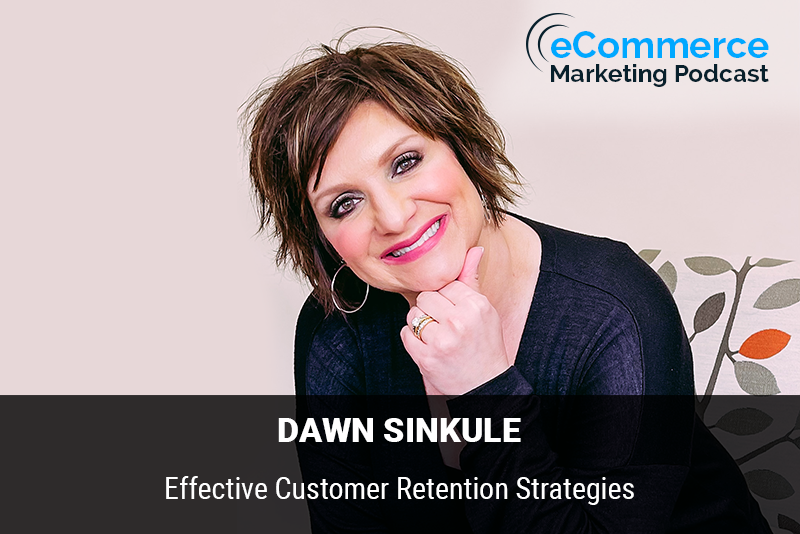
eCommerce Marketing Podcast
The eCommerce Marketing Podcast walks you through everything that goes into ecommerce marketing — from inbound marketing to paid advertising to conversions. Learn the strategies top marketing experts use to grow their businesses.
Customer Retention Strategies to Increase Revenue – with Dawn Sinkule
byArlen Robinson
Marketing Strategies and Topics Covered in this Episode:
- What is customer retention and how does it differ from winback strategy
- What are the different customer retention strategies
- How do you measure the success of customer retention strategies
- The do’s and don’ts of customer retention

In this episode of the eCommerce Marketing Podcast, host Arlen Robinson interviews Dawn Sinkule, founder of Digital Dawn. Dawn shares her extensive experience in retail and e-commerce, focusing on effective customer retention strategies to help businesses increase their revenue and retain loyal customers.
Key Takeaways:
- Introduction to Dawn Sinkule (00:01:46)
- Dawn’s background in retail and e-commerce with over 17 years of experience working at a management level for a Fortune 25 company.
- Her transition to becoming a Strategy and Business Growth Consultant and founder of Digital Dawn.
- Importance of Customer Retention (00:04:23)
- The significance of customer retention in the noisy e-commerce market, especially with the rise of new businesses during the pandemic.
- Defining Customer Retention vs. Win-Back Strategies (00:05:37)
- Customer retention focuses on repeat purchases from existing customers.
- Win-back strategies aim to regain customers who haven’t engaged in a while.
- Basic Customer Retention Strategies (00:07:05)
- Implementing loyalty programs and subscription-based models.
- Using referral programs and offering discounts for repeat purchases.
- Innovative Customer Retention Tactics (00:08:35)
- Leveraging text message marketing to keep customers engaged and informed about sales and promotions.
- Encouraging Repeat Purchases (00:12:27)
- Providing complementary product suggestions during checkout.
- Educating customers about additional products through email campaigns.
- Measuring Success of Retention Strategies (00:16:29)
- Using platforms like Shopify to track repeat purchase probability and return rate percentage.
- Understanding the profitability of repeat customers.
- Do’s and Don’ts of Customer Retention (00:19:00)
- Do: Build loyalty through user experience and after-sale marketing.
- Don’t: Bombard customers with too many messages and offers.
- Successful Retention Strategies by Companies (00:22:32)
- Example of Starbucks’ successful loyalty program and how it retains customers by offering high-quality products, easy accessibility, and frequent promotions.
Bullet Points of Key Takeaways with Timestamps:
- [00:01:46] Introduction to Dawn Sinkule and her background.
- [00:04:23] Importance of customer retention in the e-commerce market.
- [00:05:37] Difference between customer retention and win-back strategies.
- [00:07:05] Basic customer retention strategies: loyalty programs and subscriptions.
- [00:08:35] Innovative tactics: text message marketing.
- [00:12:27] Encouraging repeat purchases through complementary product suggestions.
- [00:16:29] Measuring success: return rate percentage and repeat purchase probability.
- [00:19:00] Do’s and Don’ts: Building loyalty vs. bombarding customers.
- [00:22:32] Example of Starbucks’ successful customer retention strategies.
Guest Information:
Dawn Sinkule
- Founder of Digital Dawn
- Website: Digital Dawn











